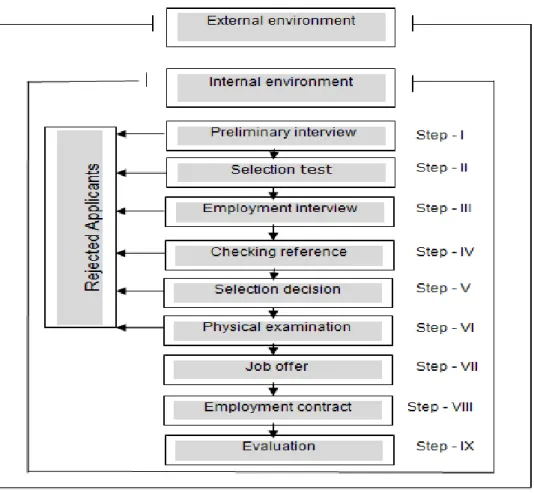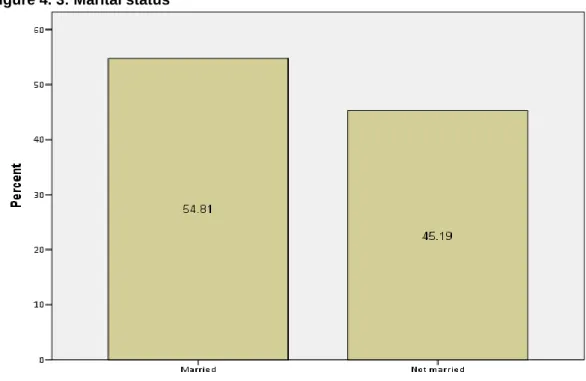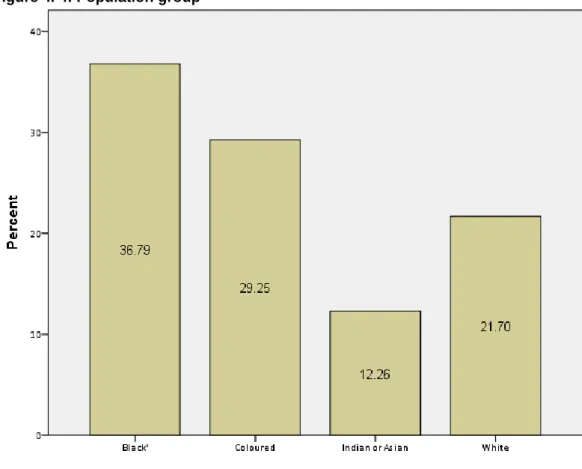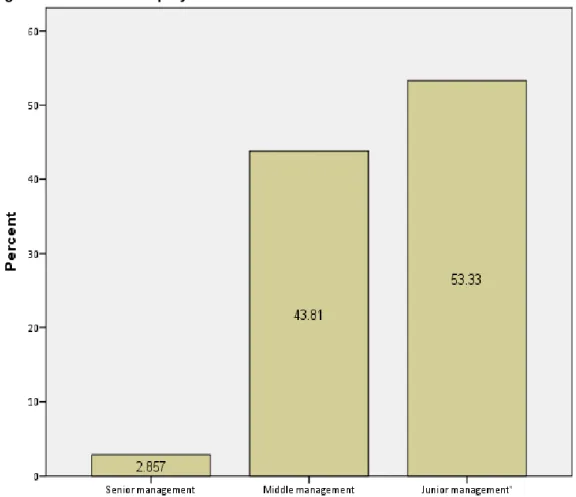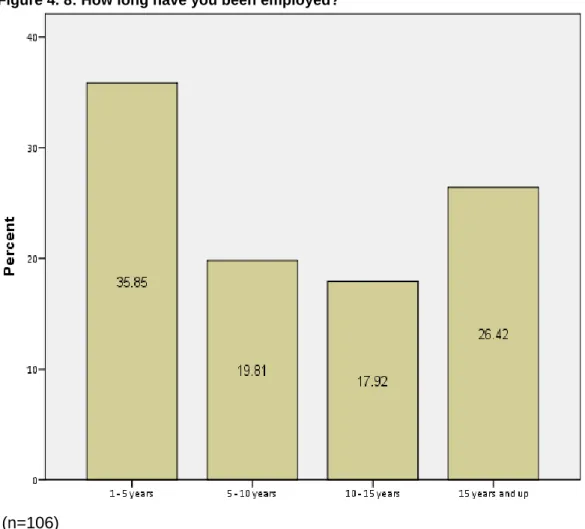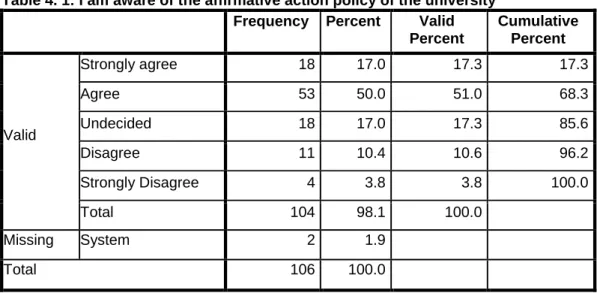INTRODUCTION AND BACKGROUND OF THE RESEARCH
STATEMENT OF THE RESEARCH PROBLEM
It can also be a product of effective recruitment and selection processes (Catano, Wiesner, Hackett & . Methot, 2010). The researcher believes that improving the recruitment and selection processes will increase the productivity of the institution.
PRELIMINARY LITERATURE REVIEW
Recruitment and selection
This shows that the majority of the respondents have read the recruitment and selection policy of the institution. The majority would like the departmental management to be part of the recruitment and selection processes.
Organisational productivity
RESEARCH HYPOTHESES
H0 - There is no correlation between employees' perception of recruitment and selection processes and organizational productivity.
OBJECTIVES OF THE STUDY
RESEARCH QUESTION
RESEARCH DESIGN AND METHODOLOGY
- Research design
- Population
- Sample frame
- Sample size
- Sample technique
- Data collection procedure
- Sample representativeness and composition
- Research procedure
- Data analysis
The selected population would help the researcher to discover employees' perceptions of the relationship between recruitment and selection processes and organizational productivity. Denscombe (2007) defines sampling frame as an objective list of the "population" from which the researcher can make his selection.
DELIMITATION OF THE RESEARCH
The data collected from the questionnaires allowed the researcher to determine whether male/female, academic/non-academic staff from different racial backgrounds think alike or not. After receiving the completed questionnaires, there was no more personal contact between the researcher and the respondents.
SIGNIFICANCE OF THE RESEARCH
EXPECTED OUTCOMES, RESULTS AND CONTRIBUTIONS OF THE RESEARCH
ETHICAL CONSIDERATIONS
SUMMARY
OVERVIEW OF CHAPTERS
Probably the most important characteristic of a world-class company is the ability to attract, develop and retain talented young people so that they become talented old people.
INTRODUCTION
GENERAL THEORETICAL PRINCIPLES OF RECRUITMENT AND SELECTION
- Recruitment
- Benefits and importance of recruitment
- Recruitment for diversity
- Challenges in recruitment
- Recruitment sources
- Internal recruitment sources
- External recruitment sources
- Technology and social networking as modern recruitment sources
- Recruitment methods
- Internal recruitment methods
- External recruitment methods
- Selection
- Importance of selection
- Essentials and prerequisites for selection
- Challenges in selection
- Workforce planning and its relationship to recruitment and selection
- Strategic planning and its relationship to recruitment and selection
- Job analysis
- Labour market
- Steps in selection process
- Requirements for a good selection process
- Selection process
- Environmental factors that afftect selection
- Preliminary interview
- Selection test
- Employment interview
- Checking reference
- Selection decisions
- Physical examination
- Job offer
- Employment contract
- Evaluation
- Barriers in the selection process
Selection procedures vary from institution to institution depending on the needs of the institution. This depends on the economy of the institution (private, government or non-profit), which can affect the selection process.
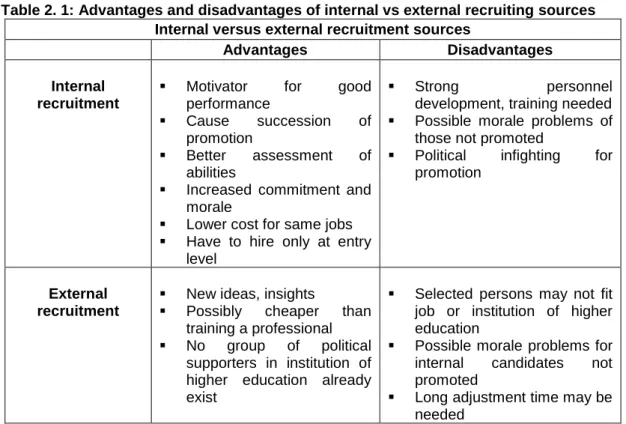
RECRUITMENT AND SELECTION LEGISLATION IN SOUTH AFRICA
- Employment Equity Act (No. 55 of 1998)
- Labour Relations Act, 1995 (No. 66 of 1995)
- Basic Conditions of Employment Act, 1997 (No. 75 of 1997)
- South African Qualifications Authority Act, 1995 (No. 58 of 1995)
- Occupational Health and Safety Act, 1993 (No. 85 of 1993)
The reason why the above organizations are not covered by the law is because they are part of the country's essential services. Ensure that appropriate systems are in place when awarding credits in recognition of prior learning. In line with the provisions of the law, it is the duty of the staff and the institution to ensure that the workplace is a safe, clean and healthy environment.
INTERNATIONAL RECRUITMENT: A COMPARATIVE ANALYSIS
Recruitment and selection in China
From the above, it shows that institutions in China do not understand the importance of a human resource department. Recruitment challenges in China is that professionals move quickly between jobs, especially in first-tier cities such as Shanghai, Beijing and Guangzhou (Ellis, Scott & Woollard, 2011). It is important for any tertiary educational institution in China or elsewhere to decide on the roles of HR and line managers when they are appointed.
RECRUITMENT AND SELECTION IN AFRICA
Recruitment and selection in Ghana
Thompson (2007) maintains that this phenomenon is largely influenced by the Ghanaian "who you know" culture (the practice whereby people recommend family members and friends for employment at an institution). The "who you know" culture makes it more difficult for a suitable candidate not to be hired for a position. According to Thompson (2007), for Ghanaians to hire the appropriate person, the criteria normally used for recruitment and selection include interviews, use of curriculum vitae and more recently, written and oral examinations set by the institution, which are more academic is, in. in nature as the general type of assessment offered in psychometric tests.
Recruitment and selection in South Africa
In many tertiary education institutions, staff members are appointed by family or friends, which can lead to unfair promotion within the institution. South African tertiary education institutions and other institutions in Africa use the same recruitment and selection process to hire staff. There are certain criteria that South African recruitment managers or recruitment officers take into account when appointing staff to an institution. 2004) claim that staff are often hired on the basis of objective criteria such as education, experiences and skills.
ORGANISATIONAL PRODUCTIVITY
- Significance of productivity
- Effects on productivity
- Measurement of productivity
- Improvement on productivity
- Factors affecting productivity
At the national level, it is important because when productivity growth increases, people's living standards improve and they can afford to buy goods and services (Kalaiselvi, 2009). It is recommended by Komoche et al. 2004), that staff should be hired based on objective criteria such as education, experience and skills. It is important for the institution's management to understand how laws, rules and regulations in government work.
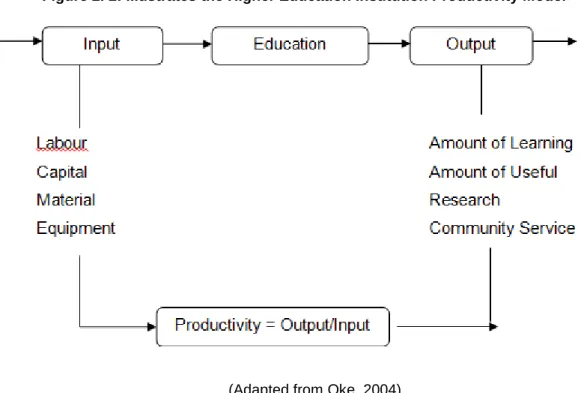
SUMMARY
Factors such as fuel, fire, water and minerals can affect productivity to some extent (Gundecha, 2012). At higher institutions, productivity can be affected when there are insufficient materials or tools to work with. It is important for any manager to be dedicated and willing to work and have the right skills and knowledge for the job.
INTRODUCTION
THEORETICAL ASPECTS OF RESEARCH METHODOLOGY
RESEARCH DESIGN
POPULATION
SAMPLE FRAME
SAMPLE SIZE
The population contained academic and non-academic staff members and were deemed able, based on their knowledge and experience within Institution X, to make a meaningful contribution to answering the question of whether there was a link between recruitment and selection processes and organizational productivity. . This is the largest faculty in the selected institution and this faculty promotes scientific research within the institution.
SAMPLE TECHNIQUE
DATA COLLECTION PROCEDURE
Research data collection procedure
Research instrument
The reason why the researcher chose a questionnaire as a data collection instrument is because the sample size was large and the researcher has knowledge of how to use questionnaires.
Instrument administration
INSTRUMENT VALIDITY AND RELIABILITY
Validity
Reliability
The reason why the researcher chose a questionnaire as the data collection tool is because the sample size was large, and the researcher has knowledge of how to use questionnaires. decision threshold level) (Lum & Kennedy, 2012). It is crucial for the reliability of the study to measure what it was intended to measure and even if one has to repeat on different people with similar characteristics. Software was used, Statistical Package for the Social Sciences (IBM SPSS), to produce statistical data.
CHALLENGES ENCOUNTERED
SAMPLE REPRESENTATIVENESS AND COMPOSITION
The diversity of the sample composition of this study should lead to different opinions regarding recruitment, selection and productivity. Staff education levels include Grade 12, Diploma, Diploma(s) or Postgraduate Diploma(s).
RESEARCH PROCEDURE
DATA ANALYSIS
DATA CLEANING AND PRESENTATION
ETHICAL CONSIDERATIONS
32.1% of the total respondents are unsure whether recruitment and selection has taken place fairly at the institution. This shows that the majority of respondents agree that recruitment and selection processes have a huge impact on organizational productivity. The results show that 47.17% of the respondents agree that the recruitment and selection processes are clearly published on Institution X's website.
As many as 74.53% of those questioned want the department management to be included in the recruitment and selection processes. Sub-objective (1) of the research: to investigate recruitment and selection methods used by institution X.

SUMMARY
INTRODUCTION
The study examined staff perceptions of the relationship between recruitment and selection processes and organizational productivity in the selected institution. Is there a theoretical and empirical relationship between employee perceptions of recruitment and selection and organizational productivity. Why it is important to know the legislative requirements for recruitment and selection.
SECTION ONE: DEMOGRAPHIC DATA
The results show that 54.81% of all respondents were married, while 45.19% of all respondents were not married. It is observed that most of the respondents have tertiary education such as diploma, diploma and post graduate degree. Staff who have been employed for a longer period of time would be more likely to be aware of how the institution's recruitment and selection processes are conducted and whether the institution's productivity has improved or not.
SECTION TWO: RECRUITMENT AND SELECTION PROCESSES AND ORGANISATIONAL
This shows that a total of 45.63% of respondents agree while 23.3% of respondents disagree with the statement. 17.9% of respondents were undecided, 4.7% of respondents disagreed and 1.9% of respondents strongly disagreed. However, 20.8% of respondents were undecided, while they disagree and 5.7% disagree completely) with the above statement.
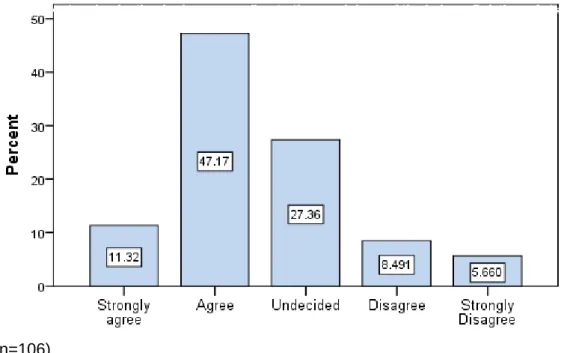
SUMMARY
10.4% of respondents were by referral, 0.9% were through skills inventory, and 3.8% of respondents were involved. The high percentage (77.4%) for job advertisements would clearly show that the institution's preferred method of recruitment is job advertisements.
INTRODUCTION
STAFF RESPONDENTS
Demographic characteristics/staff respondents
Analyzing the responses in Figure 4.2, the study found that the institution has at least 21 employees. These age groups know how to increase the productivity of the institution because they have the relevant qualifications and experience. This would mean that the institution does not provide enough opportunities for training its staff.
Recruitment and selection processes and organisation productivity
A surprising 20.19% of respondents are undecided and seem unaware or unsure whether the institution has a recruitment and selection policy. The recruitment and selection policy of the institution stipulates that the trade unions ensure that fairness considerations are taken into account in the decision-making process. The findings are disappointing because it is clear that members of staff have no confidence in the recruitment and selection processes of the department.
KEY FINDINGS BY RESEARCH OBJECTIVES
Based on the EEA, it is clear that discrimination is prohibited during recruitment and selection processes. While following the procedures it is important that the recruitment and selection teams show fairness to the recruits. It is noted that recruitment and selection is carried out in accordance with the provisions of the LRA and BCEA.
CONCLUSION
The results were derived from the responses to the questionnaires that aimed to examine employees' perceptions of the relationship between recruitment and selection processes and organizational productivity at the selected institution. The literature review in chapter two shows that there is a theoretical relationship between employees' perceptions of recruitment and organizational productivity. The findings of the study also show that there is a link between employees' perceptions of recruitment and organizational productivity.
RECOMMENDATIONS
There is therefore no doubt that this study contributes to the literature on organizational productivity, recruitment and organizational behavior. All laws and policies related to recruitment and selection must be available to all staff of the institution. Recruitment and selection teams should be aware at all times that they are hiring staff to increase the productivity of the institution.
LIMITATIONS OF THE RESEARCH
It is recommended that all members of the recruitment and selection team should undergo training to ensure that the recruitment of staff is carried out in accordance with the provisions of legislation relating to recruitment and selection. Recruitment and selection managers or recruitment and selection officers must be qualified and have the relevant certification in the field of recruitment and selection. The stakeholders of the institution should report on the productivity of the institution so that the staff know how well or poorly the institution is doing.
SUGGESTIONS FOR FUTURE RESEARCH
SUMMARY
An analysis of the impact of recruitment and selection within the department of economic development and tourism in the province. Recruitment and Selection of Foreign Professionals in the South African Labor Market: Procedures and Processes. Title: Employee perceptions of the relationship between recruitment and selection processes and organizational productivity in a university in the Western Cape Province of South Africa.
